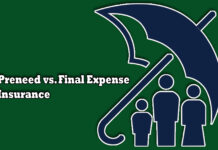Forced-placed insurance is also known as lender-placed insurance. Furthermore, it is a special form of insurance that offers coverage when a borrower does not keep sufficient coverage on a property like a vehicle or home used as collateral for a loan. In other words, if a homeowner or a car owner uses their property as collateral for a loan but is not making premium payments to keep their surety active, the lender imposes forced-placed insurance.

This is because lenders have the right to protect or safeguard their financial interests in this scenario or situation. In this blog post, we will be exploring the complexities of forced-placed surety, what it is, how it works, what it covers, what its exclusions are, how much it costs, and how to avoid getting one. Without further ado, let us begin.
What is Forced-Placed Insurance?
Lender-placed surety is another name for forced-placed surety and it is a specialized type of coverage that mortgage servicers or lenders place on a property or asset used as collateral by a borrower to secure a loan from them.
Thus, if the borrower doesn’t mot continue adequate insurance coverage, the lender has the choice to put or impose lender-placed insurance on the property to protect it. This usually takes place when the insurance quote of a borrower is canceled or lapses for a specific reason and the property is currently uninsured.
How Does It Work?
Lenders usually buy this form of insurance on behalf of their borrowers whose insurance coverage is not enough or lapses usually because of failure to keep up coverage or non-payment. Thus, to make sure that their financial interest is protected, lenders impose forced-placed insurance. Therefore, they do not have to worry about possible losses and damages. However, forced-placed surety provides limited coverage and is more expensive than a standard surety quote.
What Does Forced-Placed Insurance Cover?
The interest of a lender in an asset or property is usually covered by a forced-placed surety policy if coverage is not enough or lapses. Here is what it generally covers:
- Property coverage.
- Financial interest in the property.
What Are Its Exclusions?
Here is what forced-placed surety will not cover or be responsible for. This includes the following:
- Personal property of the borrower.
- Certain perils.
- Comprehensive coverage.
- Liability coverage.
In the meantime, the coverage and exclusion of a lender-placed insurance policy depends on the insurance provider as well.
Who Needs a Policy?
You might be subject to forced-placed surety if you fail to continue adequate insurance coverage needed by your lender. This also includes:
- Vehicle owners.
- Homeowners.
- Default borrowers.
If you default on your loan agreement and are not able to provide proof of insurance, you will be subject to lender-placed insurance.
How Much Does Forced-Placed Insurance Cost?
The average cost of forced-placed surety is four times more expensive than a standard homeowners insurance quote. Per month, it costs $106.50 to get a homeowners insurance policy. Therefore, a person is going to pay $426 to $1,065 per month for this same type of policy.
On the other hand, there are other main factors that influence the cost of this insurance type. They include; limited coverage, risk assessment, insurance company’s practices, and state regulations.
How to Avoid Forced-Placed Insurance
This form of insurance coverage can offer less coverage and is more expensive, unlike other insurance policies. To avoid forced-placed insurance from being added to your insurance coverage, here are the steps you can follow to prevent this:
- Keep up your adequate insurance coverage.
- Check the insurance requirements of your lender.
- Renew your insurance policy on time.
- Set reminders to make sure you avoid missing payments.
- Reach out to your lender.
- Follow the terms and conditions of your loan agreement.
- Look around for an insurance policy that offers competitive rates.
- Keep records of your insurance quote and premium payments.
With these steps, you can be attentive to your lender’s requirements and keep sufficient insurance coverage. You can also effectively avoid or prevent forced-placed insurance.
Frequently Asked Questions (FAQs)
Why would a lender impose forced-placed insurance?
Vehicle or home loan lenders impose forced-placed insurance to make sure that their collateral is protected against loss or damage when the borrower does not keep to ensure enough coverage. In other words, it can assist reduce the financial risks for loan lenders.
Can forced-placed insurance be removed?
Certainly, forced-placed insurance can be removed when the borrower presents proof of sufficient surety coverage that meets the requirements of the lender. For verification, this will be submitted to the loan servicer or lender.
How does a borrower know if forced-placed Surety has been imposed?
Normally, lenders notify borrowers when they impose forced-placed surety. Moreover, the borrower will get a notice showing the premium costs, coverage, and reason for imposing the insurance type. I would like you to please check your loan statements from your lender periodically.
Can forced-placed Surety affect a borrower’s credit score?
Yes, the inability to keep sufficient surety coverage and forced-placed surety ends up being imposed, and it can negatively affect your credit score as a borrower. This is because of the charges and late payments added.



